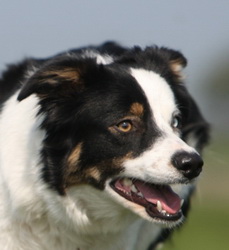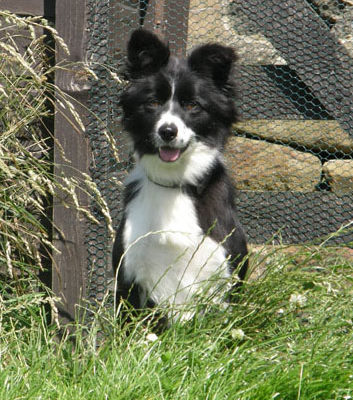
Fight and Flight Distance
Fight and Flight is the distance between prey and predator that allows a choice. Outside the fight and flight distance the prey has both time and space in its favour to decide how to react – at this point it can take flight. Once the predator reaches the edge of fight and flight, the tension mounts and the choices become limited. If the predator steps inside the fight and flight, the choice of flight has gone and the only remaining option is to fight.
Understanding the fight and flight distance and being able to read it correctly not only helps us to understand our dogs but also helps in dealing with aggression. A confident, placid dog with no aggression will show few signs of unease when another dog is quite a distance outside its fight and flight. But a dog that is dominant will have a far greater reach of distance and will begin to show signs of changed body language when quite a distance from another dog.
It’s similar with human beings, we all have our personal space and if someone walks into that space we feel uncomfortable unless they are known to us and we find them acceptable. Some people can have an effect on others when they are quite a distance away and others can almost get within touching distance before they get a reaction.
Now imagine how a dog must feel if it is nervous and a stranger not only approaches, but steps right into its fight and flight distance. The dog can’t take flight because that chance has gone and it probably can’t anyway because it’s on a lead or in a confined area. If it follows its instinct and stands to fight then it will be penalised for it, but if the situation is allowed to continue the dog will become nervous and eventually more aggressive. All it needs is for the owner to recognise the fight and flight distance and make sure the dog’s personal space is not invaded. If this is not possible then standing inbetween the dog and the problem will put a block inside fight and flight thus adding some breathing space.
On a corporate day we invited five people, at separate intervals, to approach Mossie. Each one was asked to stop at the exact point they thought they had reached their mutual fight and flight distance. One got within a couple of yards of her, three of them were close together between four and five yards away, but the other was stopped by Mossie’s reaction at over nine yards away. All the people had different characteristics, almost like different magnetic fields, and the dog picked up the aura around each one and reacted accordingly. We then tried the same technique with Ben and the result was different distances but all were in the same order. In both cases the same person was nearest to the dog, the same one furthest away and the three in the middle were stopped in the exact same order with both of the dogs!
Here is another interesting insight into how perceptive dogs are. The first time Mossie went to a seminar there were a lot of people and a lot of dogs, but she was calm throughout the whole two days. Another event at Lincoln had a lot of people in a confined area and some dogs, but Mossie still remained calm. But at a local venue, speaking to several retired Girl Guide leaders, Mossie reacted completely differently. There were less people and they all knew she was learning so no-one spoke to her or approached her, they didn’t even look at her. But, they wanted to and Mossie picked up on this and spent the first fifteen minutes sitting behind ‘mum’. After a while she relaxed and became her old self, but the sheer weight of atmosphere simply because of the feelings of no more than twelve people caused a reaction from her. Now think how approaching people, strangers in a room, or a large event with a lot of people can effect our dogs. The atmosphere in some cases will be almost shouting at them, so is it any wonder they sometimes react to situations that we haven’t even noticed?

